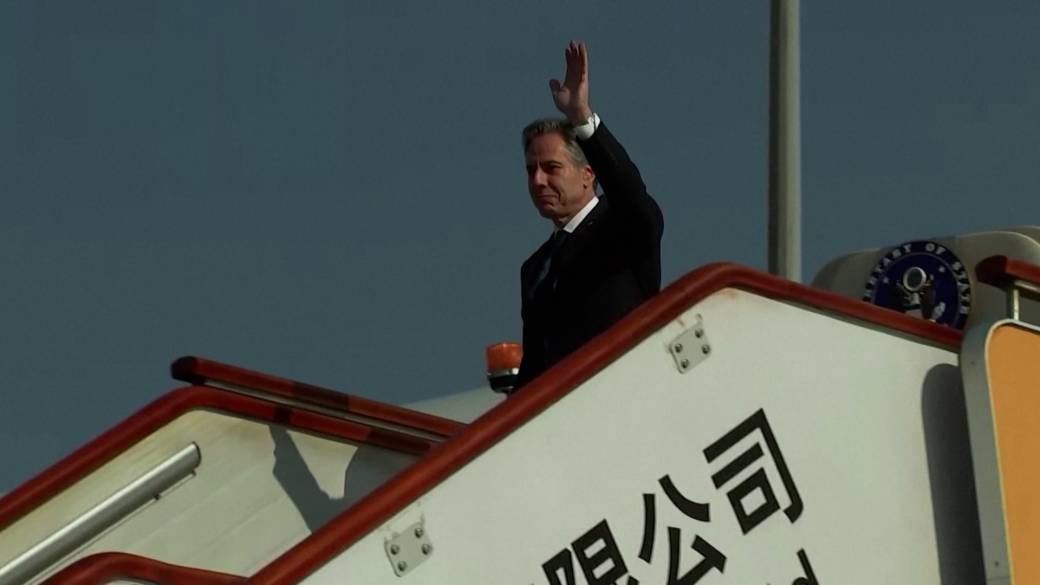Who Blinked First? Resolving The US-China Trade Standoff

Table of Contents
The Origins of the US-China Trade War: Identifying Initial Triggers
The US-China trade war didn't erupt overnight. Years of simmering trade imbalance and accusations of unfair trade practices culminated in a dramatic escalation under the Trump administration.
Trump Administration Policies and Tariffs
The Trump administration initiated the trade war by imposing tariffs on various Chinese goods, citing concerns about trade imbalances, intellectual property theft, and unfair trade practices that threatened US national security.
- March 2018: Tariffs were imposed on steel and aluminum imports from numerous countries, including China, ostensibly to protect domestic industries.
- July 2018: The first round of tariffs specifically targeting Chinese goods, valued at $34 billion, came into effect, focusing on technology and industrial goods. The stated justification was to address intellectual property theft and forced technology transfer.
- September 2018: Further tariffs on another $200 billion worth of Chinese goods were implemented, impacting a wide range of consumer products.
China's Counter-Tariffs and Retaliatory Measures
China responded swiftly and aggressively to the US tariffs, implementing its own counter-tariffs on a vast array of US goods. This tit-for-tat exchange significantly escalated the trade dispute.
- The retaliatory tariffs imposed by China targeted agricultural products (soybeans, pork), automobiles, and other goods crucial to the US economy.
- These countermeasures led to significant economic repercussions for US businesses and farmers, impacting employment and agricultural exports.
- The resulting trade dispute severely hampered global economic growth, adding to existing uncertainties.
Escalation and Negotiation: A Timeline of Key Events
The US-China trade standoff wasn't a linear conflict. It involved periods of intense escalation interspersed with attempts at negotiation.
Rounds of Negotiations and Shifting Positions
Numerous rounds of high-level trade talks took place between the two countries. These negotiations were characterized by shifting positions, significant breakthroughs, and frustrating setbacks.
- 2018-2019: Several rounds of negotiations yielded little progress, marked by alternating threats of further tariffs and accusations of bad faith.
- January 2020: The "Phase One" trade deal was signed, offering some temporary tariff relief and Chinese commitments to purchase more US goods. However, significant sticking points remained.
- Subsequent Negotiations: Hopes for a "Phase Two" deal faded as other tensions, including the COVID-19 pandemic and geopolitical issues, overshadowed trade discussions.
The Impact of Global Economic Conditions
Global economic factors played a substantial role in influencing the negotiations and the overall trajectory of the trade war.
- The COVID-19 pandemic disrupted global supply chains, exacerbating existing economic vulnerabilities and affecting the willingness of both sides to make further concessions.
- The global economic slowdown created a less favorable environment for aggressive trade policies, pushing both countries towards seeking more stable economic relations.
- The overall economic uncertainty created a compelling argument for de-escalation and a focus on stability rather than continued confrontation.
Analyzing Concessions: Who Blinked First?
Determining who "blinked first" requires a nuanced assessment of the concessions made by both sides.
US Concessions
The US made several significant concessions throughout the trade standoff.
- The "Phase One" deal included a reduction in some tariffs on Chinese goods, albeit not a complete removal.
- The US administration also demonstrated a willingness to engage in extended negotiations, showing a degree of flexibility in its initial hardline stance.
China's Concessions
China also made considerable concessions, though the extent and significance are debated.
- China committed to purchasing a significantly larger amount of US agricultural products and other goods, boosting US exports.
- China also made some commitments related to intellectual property rights and market access, though enforcement remained a significant challenge.
A Balanced Assessment
While both sides made concessions, the argument could be made that China’s concessions were more economically significant in terms of sheer monetary value. However, the US’s shift away from a purely protectionist stance, demonstrating a willingness to negotiate and compromise on its initial demands, represents a substantial political concession. Therefore, deciding who "blinked first" depends on the criteria used – economic impact or political willingness to compromise.
Conclusion: Resolving the US-China Trade Standoff – A Look Ahead
The US-China trade standoff was a complex and multifaceted event, with both sides making concessions, albeit with differing degrees of economic and political significance. Whether the US or China "blinked first" remains a subject of debate, dependent upon the interpretation of the concessions made. The lasting impact of the trade war continues to shape US-China relations, highlighting the interconnectedness of the global economy and the need for sustained cooperation on trade issues. To further your understanding of this critical topic, research the ongoing implications of the US-China trade relations, delve into trade policy analysis, and explore international trade agreements. Continue engaging in discussions on the future of the US-China trade relationship, furthering your knowledge of this complex and ever-evolving area.

Featured Posts
-
 Sigue El Partido Venezia Napoles En Directo Online
May 16, 2025
Sigue El Partido Venezia Napoles En Directo Online
May 16, 2025 -
 Report Hyeseong Kims Promotion To The Dodgers Major League Roster
May 16, 2025
Report Hyeseong Kims Promotion To The Dodgers Major League Roster
May 16, 2025 -
 Ufc 314 Chandler Predicts Pimblett Will Struggle With His Pace
May 16, 2025
Ufc 314 Chandler Predicts Pimblett Will Struggle With His Pace
May 16, 2025 -
 San Jose Earthquakes Defeat Portland Timbers Ending Winning Streak
May 16, 2025
San Jose Earthquakes Defeat Portland Timbers Ending Winning Streak
May 16, 2025 -
 0 0 Everton Vina Y Coquimbo Unido Empatan Resumen Y Analisis Del Partido
May 16, 2025
0 0 Everton Vina Y Coquimbo Unido Empatan Resumen Y Analisis Del Partido
May 16, 2025
